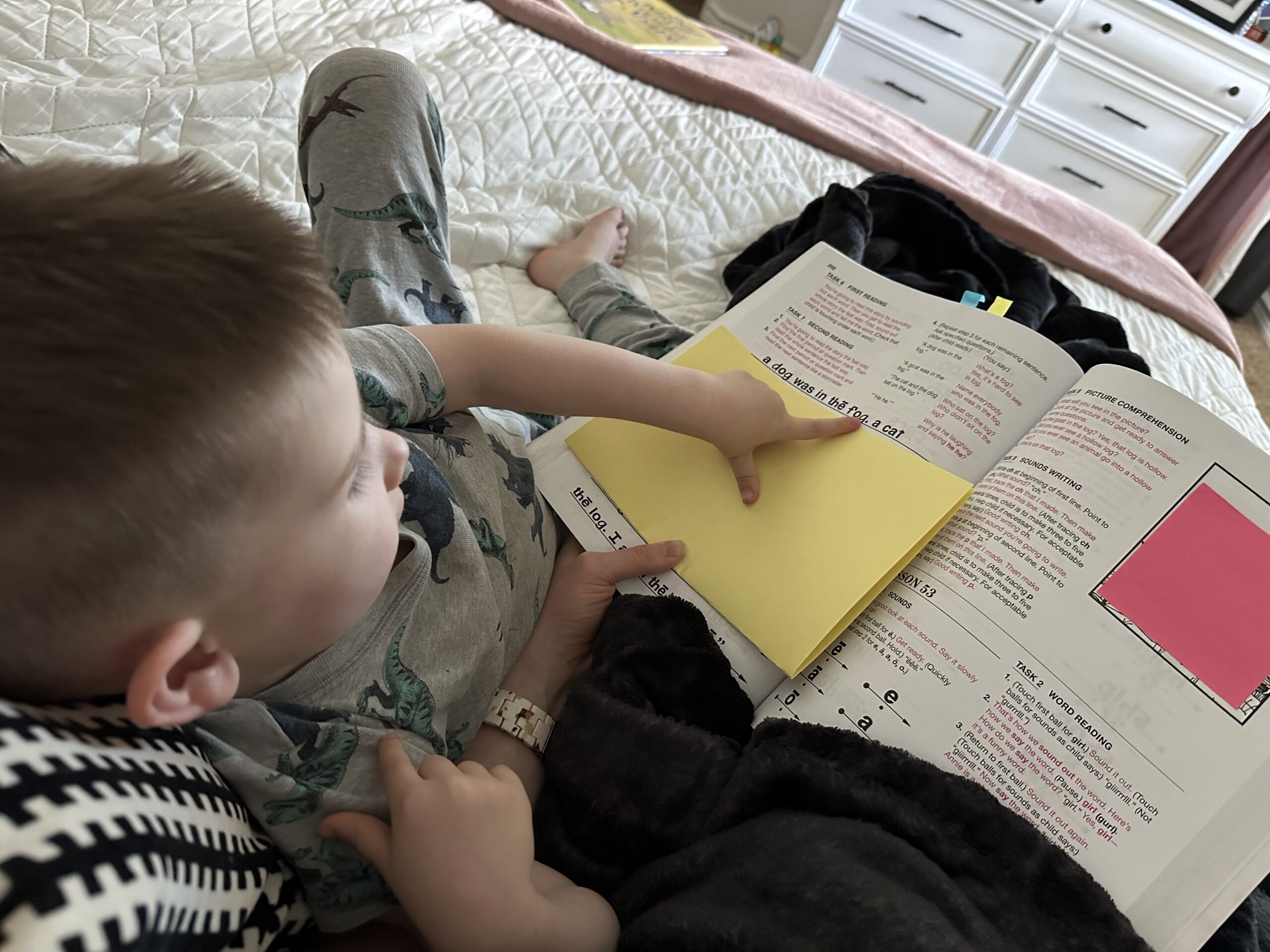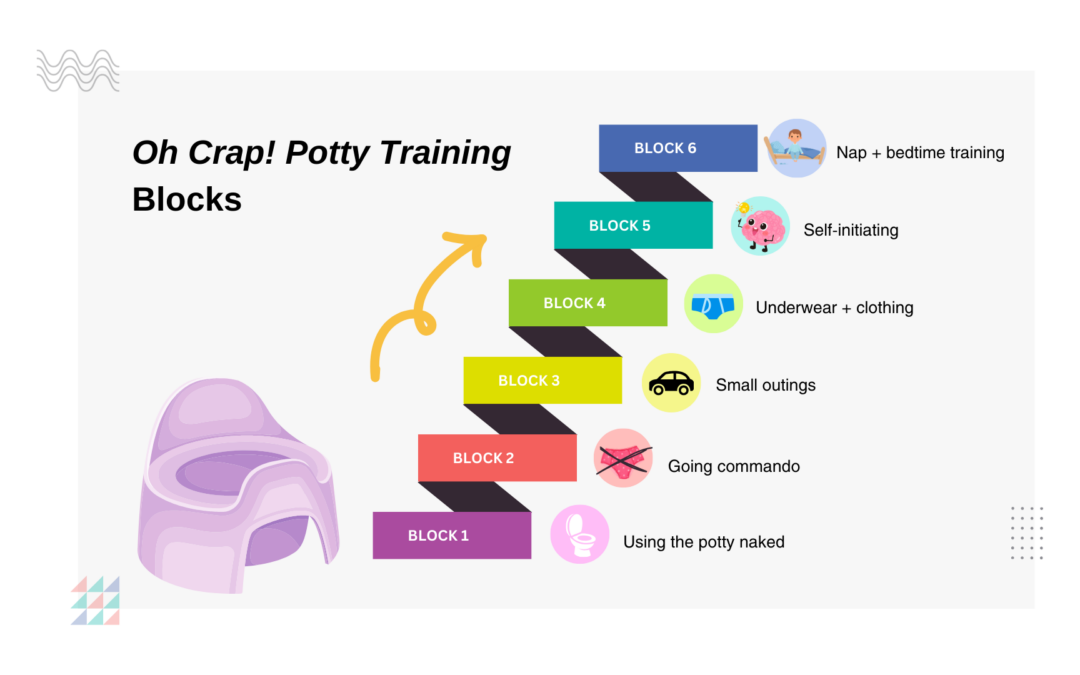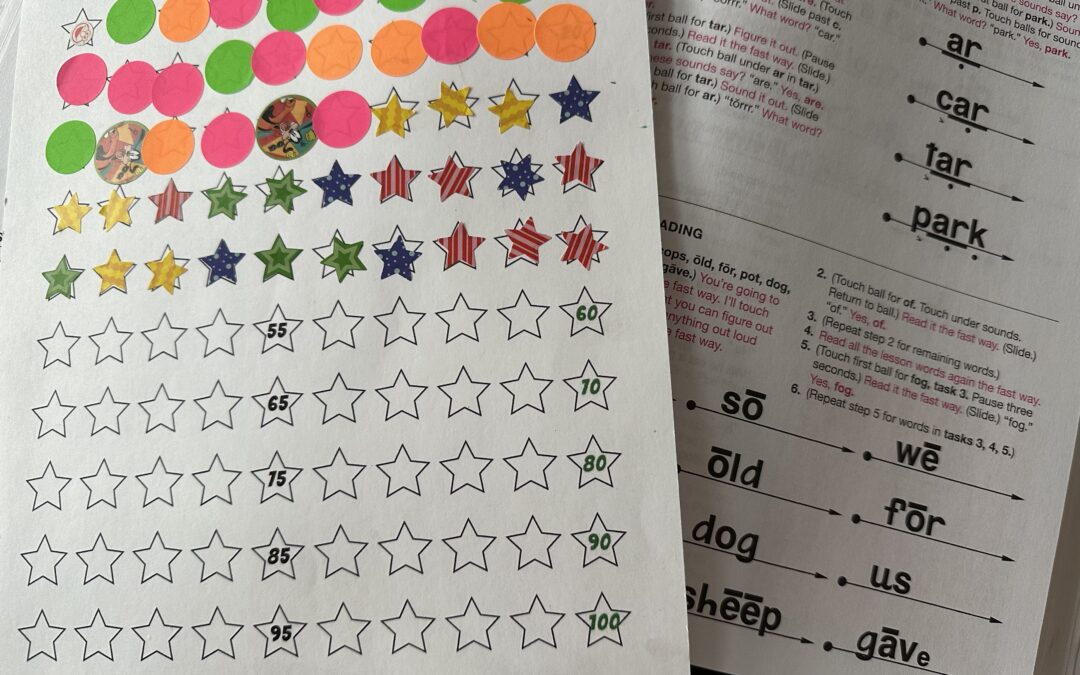Teach Your Child to Read in 100 Easy Lessons (TYCTR) is a wonderful curriculum for teaching young children to read. We have also heard that it is sometimes used to teach reading to adults who are learning English as a second language or are coming from a low-literacy background. We stumbled upon it by chance when my mom happened to read about it and decided to give us a copy. Overall, we have had a great experience with it and find it to be very effective! I wrote more about our overall experience with the book so far here.
In this post, I want to cover some of the less-than-ideal experiences we had with our three-year-old while we’ve been teaching him to read using this book and strategies we used to respond to those challenges. Some are specific to this program, but most are just side effects of trying to get a little one to focus on anything, period! We will give some specific tips that helped us, but the biggest thing to remember is attitude–none of these strategies will work unless you’re keeping the reading experience light-hearted and positive.
Attention Span / Distractions
This one isn’t surprising at all… three year olds have short attention spans. Lucky for us, T seems to have a pretty impressive attention span for his age, but it’s still a challenge. Failing attention is what has turned many of these 20-minute lessons into upwards of an hour. When a child’s attention is failing, there are two general approaches to take: 1) use focus strategies, or 2) take a break.
Focus Strategies
- Use a stopwatch. This has been working magic for us! T loves to see how long it takes him to read a set of lines or words. We will even set goals to beat, like, “Let’s see if you can read these three lines in two minutes!” It helps gamify reading the stories and keeps him focused and motivated. He loves to push the green button on my apple watch to start the stopwatch.
- Invite your child’s stuffed animals or toys to read with your child or watch him read (Disclaimer: we found that this works about half the time for us, and the other half it is actually more distracting)
- Ensure that your time and environment are not hindering focus: choose a time/place away from other family members and distractions like toys, TV, etc. We do our lessons at the kitchen table, which is usually great, but occasionally something so small as Dad coming in to get a snack can make T lose his train of thought.
- Use a sheet of paper to cover up the rest of the page or reading passage. We found that T often gets distracted by seeing words/sounds on the other side of the page and has to tell us all about them while we we’re trying to get him to focus on the task at hand. Covering them up helps a lot.
- Switch things up. Sometimes a simple change of scenery or routine makes a huge difference and adds some variety. For example, we’ll occasionally do the lesson on my bed instead of at the table, or we’ll do a list of sounds/words backward.
Take a break
- Rather than fighting to get your child to regain focus, sometimes it’s better to just give them a couple minutes to get their wiggles out. We will often take a two minute break to get a drink, eat a snack, jump on the trampoline, or play before we jump back in. This usually makes a big difference.
- Some days, the attention span is just GONE and/or the parent is losing patience. These are the times it might be good to take a longer break and finish the lesson later in the day or just wait until the next day. You may need to backtrack a little, but that’s way better than losing your cool and allowing your child to get upset and associate reading with negative emotions.

Motivation
We want our kids to be intrinsically motivated to learn, but rewards definitely have their place. This is true at any age, but especially for littles. We’re asking a lot of them! So sometimes some deliberate motivation programs can be helpful. This includes praise and rewards. Here’s what’s been working for us.
Praise
- Praise your child. Use specific compliments like, “You’ve been working so hard to learn that sound!” or, “Wow, you have been focusing really well today!”
- Praise publicly. Take opportunities to praise your child to others, such as a grandparent. Make sure your little one hears you! “I love watching T learn to read. He’s making great progress with sounding out words!”
Rewards
- Use a progress chart. This can be as simple as a 10×10 grid like the one you find in the TYC book, or you can use a chart like this. Just find a way to visually convey to your child how much progress they’ve made! This is also a great way to help your child understand what is required to meet a benchmark and help them work toward a specific reward.
- Small rewards every day/lesson. For us, this varies. But generally, we let T play on the tablet for a bit after he finishes a lesson (or half a lesson if that’s how the day’s going). We also frequently let him choose a piece of candy if he’s been working hard that day.
- Larger rewards every 5 lessons (or however many suits your needs). We told T at the beginning of the program that he had two choices each time he completed 5 lessons. He could either pick out a donut at the grocery store (which we buy at night because they’re discounted!) or pick out a toy at the dollar store (which always ends up being a car/truck). He looks forward to these so much, and we like that it works out to being a reward about once a week (and is super cheap!).
- BIG reward when he/she hits 50 lessons (or some other significant benchmark). We let T pick out a bigger, nicer hot wheels truck from a different store. He was so excited about it and felt so accomplished.
- For a child who is really struggling with focus or motivation, smaller, more frequent rewards might be necessary. On hard days, we have gotten out a lollipop and let T lick it once after every word he read successfully – works wonders!
Discouragement / Frustration
I really feel for the littles on this one. I can relate to the feeling of working so hard at something and suppressing the absolute rage that accompanies repeated failure, criticism, or setbacks. We know how hard this can be to handle, so let’s do our best to be supportive and patient when our kids feel this way.
Giving Correction
- Always mix correction with praise and enthusiasm. Soften the blow however works best for your child. They need to be corrected sometimes, but they also need to feel that correction isn’t a big deal or a negative thing.
- Sometimes T handles correction really well, but other times he melts into a puddle of sadness, no matter how nicely I do it. It’s best to correct at the moment of error (and the book gives tips about how to do this effectively), but sometimes a kid’s mood may indicate that you should delay correction for a more appropriate moment, or in some cases, just withhold it and correct it another day if the mistake recurs.
- Choose wording that your child responds well to. The book has helpful scripts, but you can always adjust to fit your needs. Some phrases we use are “Can you say that one again?” “I couldn’t hear that word- can you read it for me again?” “Close! Let’s sound this one out together.” “Do you want help on that one or do you want to sound it out yourself?” “That one’s tricky! Let’s try it again.”
While correction is essential to build a strong reading foundation, I have found that there is no need to worry about your child mastering a particular exercise/task the first (or even second and third!) time around, so there’s no need to press it to the point of frustration. The structure of the TYC course includes a lot of repetition over multiple lessons and many chances to practice, master, and apply skills. I can recall no instance in which a new skill had to be mastered in one lesson in order to succeed in subsequent lessons. There’s also a lot of value to letting the concept sink in and process while your child sleeps. So give yourself and your kid a break and wait a few days before you start to drill something.
Help Them See their Progress
- Show your child words they can now read in picture books, etc. This is a great way to let your child see how far they’ve come and the fruits of working hard and sticking with it!
- Refer back to their progress/sticker chart. Help them see how much they’ve already accomplished! (Warning: stay away from this if your child is really discouraged, because they might see the proverbial glass half empty instead of half full.)
- Remind them that at the beginning of their lessons, they probably didn’t know how to read any words at all! Consider flipping back to the beginning of the book to show them what they used to find challenging and remind them that they overcame that obstacle and can continue to accomplish difficult things.
Some Specific Issues We Ran Into
Guessing Words
This one is so incredibly frustrating. Mistakes are easy to correct compared to this. T went through a short phase of guessing/assuming words a lot, but he does it only occasionally now. I guess that’s a natural side effect of starting to read faster and learn sight words rather than sounding out every little thing. I found that a lot of reminders, combined with prompts to “keep your eyes on the page” and “use your finger to point to the word you’re reading” were helpful.
Whether the child is guessing or just making an error, one dialogue that has worked for us is: “I didn’t see mmmmm in that word. What sound is this? [point to the sound] … Yes! Now read the word again.” You can also just underline the word with your finger to hint that they need to try it again, rather than correcting vocally. I think it can also help to kindly reassure your child that it’s okay to slow down, sound it out, or ask for help if they’re not sure about a word, rather than guessing.
Going Painfully Slow
Here, I am not talking about when a child is struggling to figure something out and needs time to think. I am referring to when a child, for whatever reason, is just dragging their feet and taking what feels like minutes between word, sound, or task. You can usually tell when it’s just a behavior rather than when your child is having a hard time with a skill. If you’re a busy parent with limited time to knock out a lesson, this one might grind at your gears like it does to me.
Since T is usually motivated to learn and finish his lessons, sometimes I will tell him something along the lines of, “Look, T. I have other things I would like to get done while E is napping, so if you’re not ready to focus and get this done, I’m going to go do XYZ right now and we can do this later.” Usually he’ll say, “I want to do it!” and his speed and focus pick up significantly. This wouldn’t work on every child, but it works great for us.
Another thing I’ve found is that sometimes validation that he read the previous word correctly helps him move on faster to the next word. Simple words like, “good” or “right” can do the trick, but I found it more effective to repeat the word he just read. This assures him that he did it correctly and can move on, but it’s also a great way to give him opportunities to hear proper pronunciation.
Refusing to Do a Task
There are tons of ways to handle this one, but as a parent, you’re most equipped to predict what will work best for your child. One phrase that worked for us was, “Okay, we can come back to this after the next task.” Make sure your child agrees to this arrangement before you move on. Usually this doesn’t upset the flow of the lesson too much.
Like mentioned before, we’re not above bribery. I will offer a tiny reward (such as a lollipop lick) after small accomplishments, such as every word T reads in a task that he doesn’t want to do.
Rhyming
At first, the concept of a “starting sound” and a “rhyming sound” didn’t click. This was an instance that we ad-libbed the instructions sometimes to help the idea sink in, plus lots and lots of practice. This is one that seems to be easier to show by example than to explain. If they see you doing the exercise, they’re more likely to comprehend what you’re asking them to do.
Reading the Fast Way (Sound it out in your head)
Most of the time, I feel that the suggested wording/script is really effective and following it (more or less) helps me avoid common pitfalls in poor explanations. However, when reading words rather than sounding them out was introduced, I quickly found that this was one instance that using my own wording was more effective. The book suggests phrases like, “Sound it out to yourself before you say it out loud” and “You figure out the word. But don’t say anything out loud until I tell you to read it fast.” T couldn’t figure out how to sound things out silently at first, until I realized that the concept of doing something “out loud” or “in your head” didn’t quite click yet. So I started saying things like, “Keep your mouth closed while you figure out the word, then say it once you know the word.” Whether it was the changes I made, or just practice, I don’t know. But within a few lessons, he was proficient at this skill!
Reading Long Passages
When passages started getting longer (more than a short sentence), T started to resist a bit. I knew it wasn’t because the words themselves were too challenging because he could read individual words just fine. I quickly realized that the long passages felt intimidating and time-consuming to him, even though he was completely able to read them. I started to use a sheet of construction paper to underline the line we were on and hide the rest of the story. It really helped prevent overwhelm and intimidation from looking at a long passage all at once.
Other times, his attention span and willingness really has been pushed to its limit and it’s time to take a break. We will stop before the story, midway through it, or after he’s read through it the first time. We just pick up where we left off when we come back to it and everyone is a lot happier that way.
To Summarize
- Attitude is everything! Kids pick up on your mood and tone so easily and will reflect your frustrations back at you.
- The script works!… except when it doesn’t. Change the script, your strategies, and your routine as you see fit and as your child develops.
- Don’t be afraid to take a break.
- Find meaningful ways to recognize, praise, and reward your child’s progress in small and large ways.





0 Comments